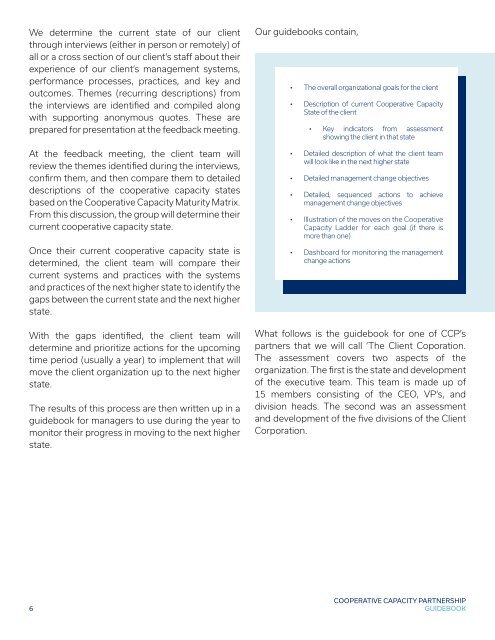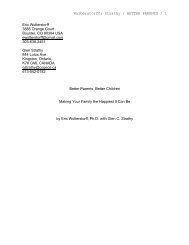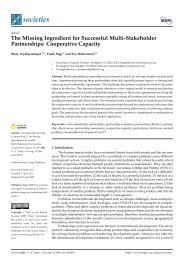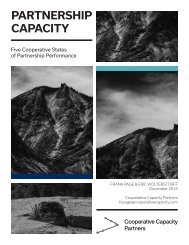An Example CCP Guidebook for Building Organizational Performance
Cooperative Capacity trains partners and implements quick organizational assessments. This publication is an example of the final report an organization would receive. In a short, customized report, the organization's current state is described, the desired state explained, and the general work plan for reaching the next higher state that is created with the client is presented.
Cooperative Capacity trains partners and implements quick organizational assessments. This publication is an example of the final report an organization would receive. In a short, customized report, the organization's current state is described, the desired state explained, and the general work plan for reaching the next higher state that is created with the client is presented.
Create successful ePaper yourself
Turn your PDF publications into a flip-book with our unique Google optimized e-Paper software.
We determine the current state of our client<br />
through interviews (either in person or remotely) of<br />
all or a cross section of our client’s staff about their<br />
experience of our client’s management systems,<br />
per<strong>for</strong>mance processes, practices, and key and<br />
outcomes. Themes (recurring descriptions) from<br />
the interviews are identified and compiled along<br />
with supporting anonymous quotes. These are<br />
prepared <strong>for</strong> presentation at the feedback meeting.<br />
At the feedback meeting, the client team will<br />
review the themes identified during the interviews,<br />
confirm them, and then compare them to detailed<br />
descriptions of the cooperative capacity states<br />
based on the Cooperative Capacity Maturity Matrix.<br />
From this discussion, the group will determine their<br />
current cooperative capacity state.<br />
Once their current cooperative capacity state is<br />
determined, the client team will compare their<br />
current systems and practices with the systems<br />
and practices of the next higher state to identify the<br />
gaps between the current state and the next higher<br />
state.<br />
With the gaps identified, the client team will<br />
determine and prioritize actions <strong>for</strong> the upcoming<br />
time period (usually a year) to implement that will<br />
move the client organization up to the next higher<br />
state.<br />
The results of this process are then written up in a<br />
guidebook <strong>for</strong> managers to use during the year to<br />
monitor their progress in moving to the next higher<br />
state.<br />
Our guidebooks contain,<br />
• The overall organizational goals <strong>for</strong> the client<br />
• Description of current Cooperative Capacity<br />
State of the client<br />
• Key indicators from assessment<br />
showing the client in that state<br />
• Detailed description of what the client team<br />
will look like in the next higher state<br />
• Detailed management change objectives<br />
• Detailed, sequenced actions to achieve<br />
management change objectives<br />
• Illustration of the moves on the Cooperative<br />
Capacity Ladder <strong>for</strong> each goal (if there is<br />
more than one)<br />
• Dashboard <strong>for</strong> monitoring the management<br />
change actions<br />
What follows is the guidebook <strong>for</strong> one of <strong>CCP</strong>’s<br />
partners that we will call ‘The Client Coporation.<br />
The assessment covers two aspects of the<br />
organization. The first is the state and development<br />
of the executive team. This team is made up of<br />
15 members consisting of the CEO, VP’s, and<br />
division heads. The second was an assessment<br />
and development of the five divisions of the Client<br />
Corporation.<br />
6<br />
COOPERATIVE CAPACITY PARTNERSHIP<br />
GUIDEBOOK






